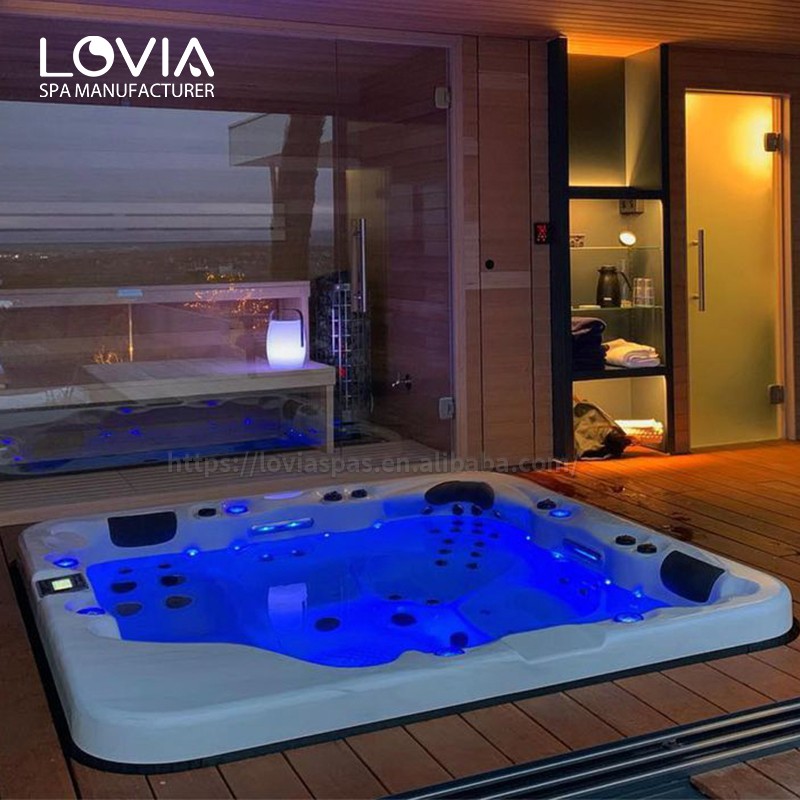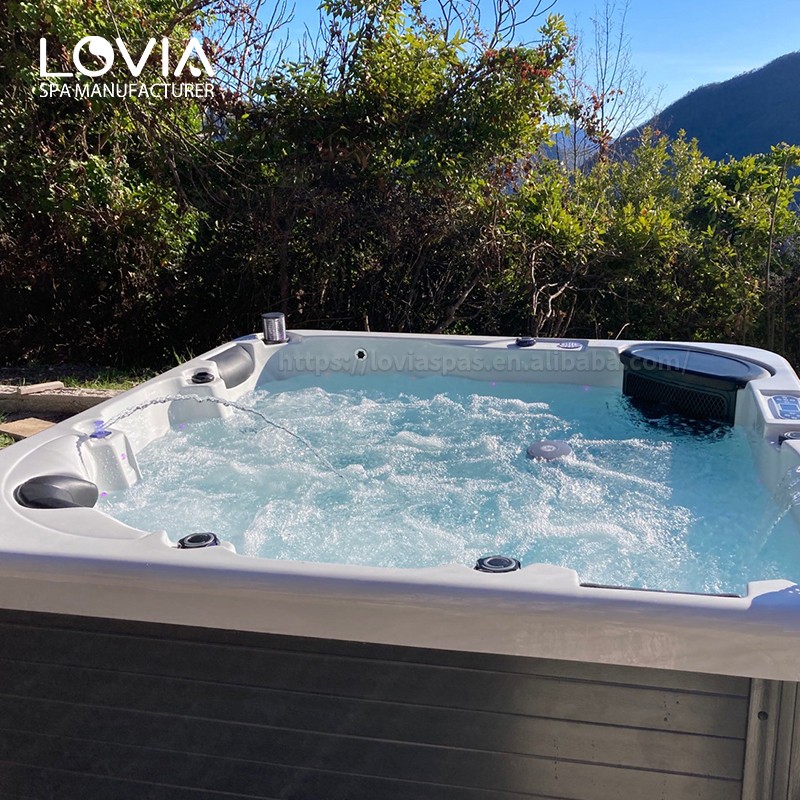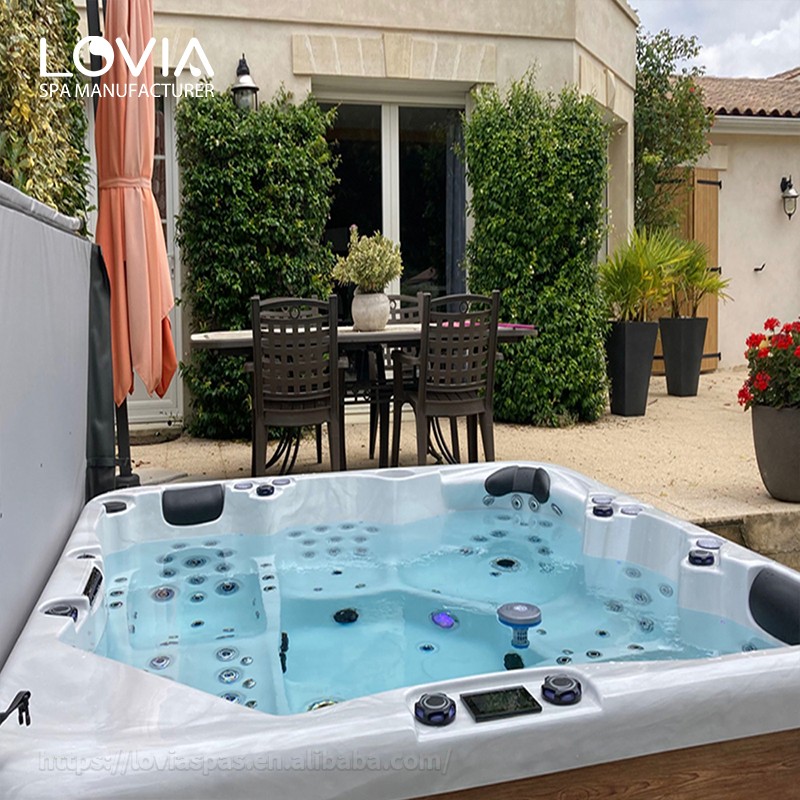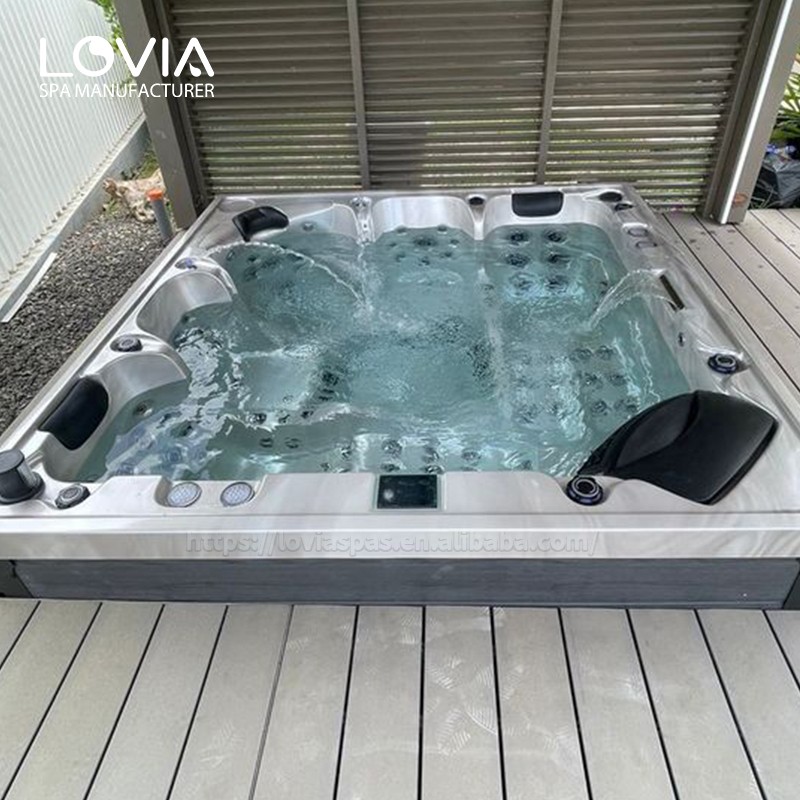
Is it harmful to sit in an outdoor hot tub with algae?
2025-02-21 15:30Outdoor hot tubs have become a popular choice for many families and outdoor enthusiasts to relax and relieve stress. However, algae may grow quietly without regular maintenance or suitable environmental conditions. The appearance of algae not only affects the aesthetics of the hot bathtub, but may also have a negative impact on water quality and human health.
This article will take a deep look at the causes of algae in outdoor hot tubs and the health risks of soaking in a hot bathtub with algae to help readers better understand and manage hot tub cleanliness and safety.

Why does an outdoor hot tub have algae?
1.1 Outdoor exposure to sunlight
The location and use environment of outdoor hot tubs often make them ideal places for algae to grow. Algae is a type of photosynthetic autotrophic organisms that rely on light to grow and reproduce. The outdoor environment, especially areas with direct sunlight, provides abundant sunlight for the growth of algae. Both short-term sunlight exposure and long-term continuous sunlight will accelerate the reproduction of algae in hot tubs.
If the location of the outdoor hot tub is not adequately shielded, direct sunlight on the surface of the hot tub for a long time provides an almost ideal environment for algae. In addition, higher water temperatures further promote the reproduction rate of algae, so outdoor hot tubs are more susceptible to algae problems than indoor hot tubs.
1.2 Inadequate water disinfection
Water disinfection is one of the key measures to prevent algae from growing in outdoor hot tubs. Generally, chlorine and bromine are commonly used disinfectants in outdoor hot tubs, which can effectively kill bacteria, fungi and algae in the water. However, if the concentration of these chemical disinfectants is insufficient or ineffective, it will reduce the antibacterial ability of the water and provide a suitable breeding environment for algae. Improper use of disinfectants or too frequent water replacement will also reduce the disinfectant content in the water and increase the risk of algae growth.
In addition, sometimes users may add minerals or other substances to water that has not been chemically disinfected, and these ingredients may promote the growth of algae. If the water quality is not clean and the disinfectant is insufficient, algae can easily grow in the hot bathtub.
1.3 pH and alkalinity imbalance
The pH and alkalinity of water are two important factors that affect the growth of algae. Algae will reproduce rapidly in an environment with a high pH and high alkalinity. Therefore, it is crucial to keep the pH and alkalinity of water within the appropriate range. Generally, the ideal pH value of a outdoor hot tub is between 7.2 and 7.8, and the alkalinity is maintained between 80 and 120 ppm. If the pH value is high, algae will spread and reproduce rapidly in this environment.
In addition, high alkalinity will also make the water turbid, which will affect the clarity of the water. This turbid water will cover the presence of algae and further promote its reproduction. Through proper water quality testing and pH adjustment, the appearance of algae in outdoor hot tubs can be effectively prevented.
1.4 Organic matter accumulation
Outdoor hot tubs will accumulate a large amount of organic matter after long-term use. Oil on human skin, sweat, skin care product residues, and even impurities in the air may enter the hot bathtub with use. These organic substances provide rich nutrients for algae. Without regular cleaning and water treatment, the accumulation of organic matter can exacerbate the growth of algae.
In addition to human secretions, impurities in the external environment, such as fallen leaves, insects, and dust, can also provide sufficient nutrients for algae. By keeping the hot bathtub clean and reducing the accumulation of organic matter, the growth rate of algae can be slowed down to a certain extent.

Is it harmful to sit in a outdoor hot tub with algae?
Knowing the reasons for the growth of algae in outdoor hot tubs, another question many users are concerned about is: Will sitting in a outdoor hot tub with algae cause harm to physical health?
2.1 Skin health risks
The presence of algae not only affects the beauty of the hot bathtub, but may also pose certain risks to skin health. Although most algae themselves do not directly harm the skin, their presence can deteriorate water quality and create conditions for the growth of other harmful microorganisms. For example, the growth of algae in water is often accompanied by the growth of bacteria, which can cause skin irritation and infection.
● Skin itching: Contact with water containing algae may cause itching, dryness, and even redness and swelling of the skin, especially for people with sensitive skin.
● Dermatitis risk: When algae grow in large numbers, the microbial environment in the water changes, increasing the risk of contact dermatitis. Contact dermatitis is an allergic skin reaction caused by external irritants, which can cause redness, stinging and discomfort.
2.2 Discomfort of the eyes and respiratory tract
The growth of algae is often accompanied by changes in the chemical composition of the water, such as increased pH and turbidity. Contact with water containing algae may cause discomfort to the eyes and respiratory tract, especially when other harmful microorganisms are present in the water. When soaking in water containing algae, particles and impurities in the water can easily enter the eyes, causing discomfort or irritation.
If these unclean water vapors are frequently inhaled during the bath, they may also irritate the respiratory tract, especially for users with sensitive respiratory tracts, who may experience coughing or nasal discomfort.
2.3 Gastrointestinal health risks
While bathing in a outdoor hot tub, accidentally swallowing water containing algae may also cause harm to your health. The presence of algae is often accompanied by potential pathogens that, when swallowed, may cause gastrointestinal discomfort or even mild gastrointestinal infections. Although most cases will not have serious consequences, symptoms such as diarrhea, nausea, and stomach pain may occur.

How to remove algae from a outdoor hot tub?
3.1 Cleaning and changing the water
Regular cleaning is the key to keeping a hot tub clean. For hot bathtubs that have already developed algae, it is necessary to empty the hot bathtub and clean it thoroughly. When cleaning, you can use appropriate detergents, especially products with antiseptic and algaecidal effects, to ensure that the remaining algae is completely removed.
At the same time, replacing new water and regularly monitoring water quality can help prevent algae from growing again. Generally, it is recommended to change the water every two months, depending on the frequency of use and water quality.
3.2 Adding the right amount of disinfectant
Maintaining the disinfectant concentration in the outdoor hot tub within the appropriate range is an important way to prevent algae growth. The right amount of chlorine or bromine can effectively kill algae and other bacteria and ensure water hygiene. However, improper use of disinfectants may lead to unbalanced water quality. Therefore, it is recommended to regularly test the disinfectant concentration in the water and adjust the dosage based on the test results to ensure that algae is difficult to grow in the water.
3.3 Control the pH and alkalinity of the water
Algae grows more easily in an alkaline environment, so it is important to keep the pH of the water within the normal range. By using a pH regulator, adjusting the water quality of the hot bathtub to the proper acid-base balance will help inhibit the growth of algae. Regularly testing the pH and alkalinity of the water and keeping them in the appropriate range can effectively prevent the occurrence of algae and other water quality problems.
3.4 Avoid direct sunlight
As mentioned earlier, sunlight is one of the main factors that promote the growth of algae. To reduce the chance of algae growth, you can choose to install an awning above the hot tub or use an opaque cover to block the sunlight. In addition, keeping the cover closed when the hot bathtub is not in use can also effectively prevent the growth of algae.

Looking for reliable outdoor spa solutions at competitive prices? Guangzhou HuanTong Industrial has been a leading supplier of high-quality wellness products since 1989. We manufacture a wide range of outdoor spas, including acrylic outdoor hot tubs, wooden spas, and swim spas, all designed with cutting-edge technology for superior comfort and performance. With a monthly production capacity of over 1200 units, we can easily meet orders. We offer wholesale prices and bulk purchasing options, along with attractive discounts and promotional offers. Contact us large today for affordable, high-quality outdoor wellness solutions.
